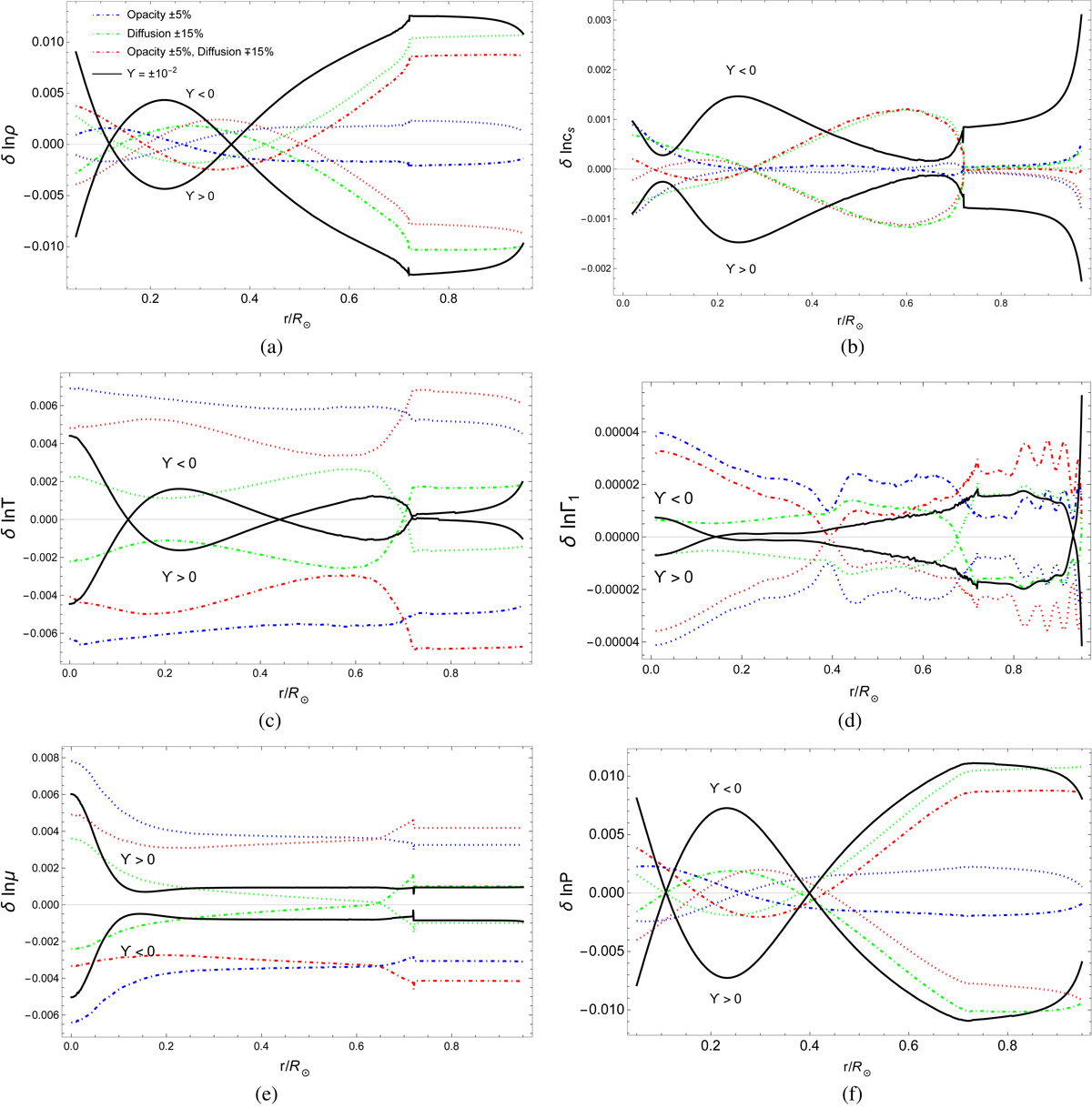Fig. 5.

Download original image
Fractional model differences in the sense (reference model) – (modified model) for solar interior profiles. This illustrates the importance of the most significant uncertainties in solar modelling (opacity, diffusion) against the fifth-force effect. The legend for the curves is shown in the top left panel. The dot-dashed (dotted) curves correspond to an increase (decrease) of the respective input physics parameter. For the combined change of opacity and diffusion the dot-dashed curves correspond to increased opacity and decreased diffusion. The reference model is the calibrated solar model at standard gravity with GS98 metallicity and with unmodified opacity and diffusion coefficients, as explained in the text and Table 2. In all panels, the models with the fifth force turned on (black, solid curves) are computed on top of our reference model at standard gravity, and have a value of the fifth-force coupling |𝒴| = 10−2 for illustration purposes. As conservative estimates for the uncertainties in input physics we use ±5% for opacity and ±15% for diffusion, which are computed on top of our reference model (see Sect. 4). We also consider the combined effect of the simultaneous uncertainty of opacity and diffusion. The mild variation of the density and sound-speed profiles around the base of the convective zone (≃0.71 R⊙) has been explained through analytic relations in Sect. 2. (a) Density. (b) Speed of sound. (c) Temperature. (d) Adiabatic index. (e) Mean molecular weight. (f) Pressure.
Current usage metrics show cumulative count of Article Views (full-text article views including HTML views, PDF and ePub downloads, according to the available data) and Abstracts Views on Vision4Press platform.
Data correspond to usage on the plateform after 2015. The current usage metrics is available 48-96 hours after online publication and is updated daily on week days.
Initial download of the metrics may take a while.


